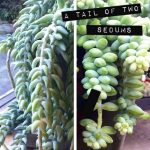I know you’re dragging your heels, not wanting to admit that Fall and that dreaded last season of the year are just around the corner. But if you don’t sow seeds now, you won’t be able to reap the benefit of harvesting them later.
Here are some good seeds to grow in containers for fall harvesting:
- Arugula – Grows very quickly, so there’s no need to start the seeds indoors. Sow them right into their final location. You can begin to eat the thinnings by waiting until then are 2 inches tall. Simply pluck out extra plants so that the remaining plants are 3 inches apart. To keep the harvest going for longer, snip the outter leaves of mature plants when they are about 4 inches long, but leave the rest of the plant to keep on growing. Repeat as long as possible (hopefully until frost).
- Beets – Be sure to thin out the rows (or whatever shape you plant them in) so that the beets are 4 inches apart. If you grow them too close together the roots will be irregularly shaped and small. Keep the soil evenly moist for the best tasting beets. If the red juice that comes out of beets annoys you, try one of the yellow varieties.
- Lettuces – Try some of the beautifully colored lettuces. There are red leafed varieties and green varieties flecked with rose tones. Renee’s Garden Seeds has several varieties specially bred for containers, like this Ruby & Emerald Lettuce Duo.
- Mache – A mild, nutty-flavored green (also called lamb’s lettuce or corn salad that forms fist-sized rosettes of small oval leaves. If you live in an area with mild winters, you may be able to grow mache all winter long. A great way to have fresh vegetables when few others are available.
- Chervil – A really beautiful plant. It has lacy bright green leaves and forms attractive clumps of foliage. Chervil tastes like a more refined version of anise and parsley. Use it in salads or in the classic French “fines herbes” trio.
- Chives – I really love garlic chives and having a pot full of them right outside my front door is really handy. They’re perennial in mild climates like mine, so I snip off what I need when I need it, and it happily grows back.
- Carrots – If you only have relatively shallow pots, why not try one of the shorter varieties, like Thumbelina, Round Romeo, or Baby Babette? Home grown carrots are much sweeter, juicier, and crunchier than store bought carrots.
- Cilantro – I recently bought some of the most beautiful cilantro I’ve ever seen. This cilantro has thin, lacy leaves that are reminiscent of ferns. It’s called Delfino. When you only have a small space to work with, even the edibles have to pull their weight in the looks department!
- Chard – Another plant that is both useful and beautiful. Look for Ruby Chard and enjoy the bright red stalks. There are even rainbow varieties. Chard is great becuase you can harvest just the outer leaves and the plant will continue to grow more for as long as weather permits.
- Peas – Create teepees out of bamboo sticks and twine and train the pees to grow up them. This method can look very classy if done right. Peas have beautiful flowers which are then followed by the pods. Look for an edible pod variety (like Snow or Sugar Snap) to save yourself the trouble.
- Dill – So many herbs and vegetables come from attractive plants that I feel like I am getting repetitive, but dill is another plant that is both pretty and edible. Its lacey leaves are held high, so it’s easy to cram dill into a pot with lower growing herbs, like thyme or oregano.
- Radishes – There is a reason every kindergartner on the planet has grown radishes in a cup: they’re super easy to grow! Don’t let their willingness to germinate persuade you that they’re just for kiddie gardners though. There are several varieties that are more unusual and will appeal to adult palates. Look for Petit Dejeuner and Easter Egg, or save yourself some money at the speciality grocery and grow your own Daikons.
- Kale – There are many ornamental varieties of Kale for a reason: they have beautiful, lush, heavily ruffled leaves. They add great height and texture to mixed containers.
- Scallions – Yesterday I picked up a variety of scallion seeds that is red! Keep an eye out for similarly unusual types. Use early thinnings in salads or stirfrys and continue to slowly thin and eat until remaining scallions are an inch or two apart.
- Parsley – Since you’re growing your own, you might as well look for something better, or more unusual than what is available in stores. Look for Italian Flat Leaf varieties, or Moss Curled, which has beautiful, extremely deep green, leaves. As an added bonus, parsley is a perennial and will tolerate pretty cold winters.
What do you plan on growing in your garden this Fall?

